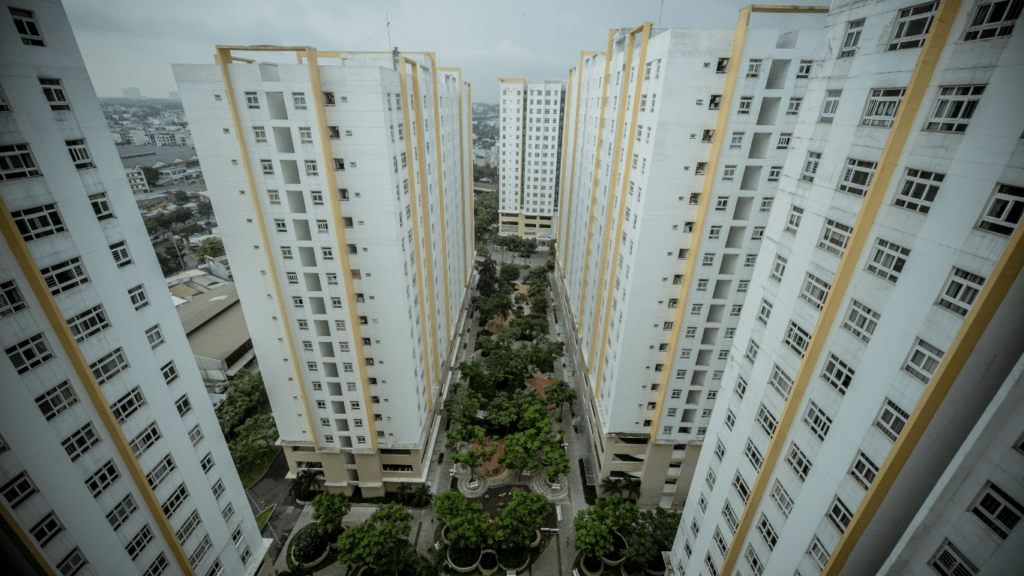As a seasoned blogger, I’ve delved into the intricate relationship between climate change and its impact on global property prices. The shifting climate patterns are not only reshaping our environment but also leaving a profound mark on the real estate market worldwide.
From rising sea levels threatening coastal properties to extreme weather events affecting insurance costs, the repercussions of climate change are reverberating through the property sector. In this article, I’ll explore the nuanced ways in which climate change is influencing property prices on a global scale.
By examining the intersection of environmental shifts and real estate valuations, we can uncover the challenges and opportunities that arise in this evolving landscape. Stay tuned as we navigate through the intricate web of factors shaping the future of property investments in a changing climate.
Impact of Climate Change on Property Values
Exploring the influence of climate change on property values unveils a critical insight into the real estate market’s evolving dynamics. Environmental shifts, exacerbated by climate change, are reshaping the landscape of property valuations and investment considerations worldwide.
From coastal properties facing the threat of rising sea levels to inland areas experiencing heightened risks of extreme weather events, the impact of climate change on property values is undeniable. Localized effects of climate change, such as increased flooding, wildfires, and hurricanes, directly influence property values in vulnerable areas.
Properties exposed to these risks often face declining values as potential buyers and investors factor in the associated hazards and costs of protection and insurance. In contrast, regions with resilient infrastructure and proactive climate adaptation strategies may experience increased demand and higher property values, reflecting the growing importance of sustainability and resilience in real estate markets.
Furthermore, the long-term outlook for property values is intricately linked to climate change mitigation efforts and regulatory developments. Government policies aimed at reducing greenhouse gas emissions, promoting energy efficiency, and enforcing stringent building codes play a significant role in shaping property values.
Real estate markets that embrace sustainability practices and eco-friendly initiatives are likely to attract more discerning buyers and command premium prices, signaling a shift towards environmentally conscious investments in response to climate change challenges. The intersection of climate change and property values underscores the need for stakeholders in the real estate industry to adapt and innovate in the face of evolving environmental risks.
By incorporating climate resilience measures, adopting sustainable building practices, and staying informed about regulatory changes, property owners, developers, and investors can navigate the impacts of climate change and position themselves for long-term success in a changing world.
Factors Driving Property Price Changes Due to Climate Change
As a real estate expert, I’d like to delve into the factors that are fueling fluctuations in property prices due to the effects of climate change. Let’s explore how rising sea levels and extreme weather events are playing a significant role in reshaping the real estate market landscape.
Rising Sea Levels
Rising sea levels pose a considerable threat to coastal properties worldwide. Coastal real estate is increasingly vulnerable to inundation and erosion, leading to substantial property devaluation. Properties situated in low-lying areas face heightened risks of flooding, especially during extreme high tides and storm surges.
As a result, investors and homeowners alike are reevaluating the long-term viability of coastal properties, considering the escalating costs of maintenance and insurance against potential damages caused by rising sea levels.
Extreme Weather Events
Extreme weather events, including hurricanes, wildfires, and severe storms, are becoming more frequent and intense due to climate change. These events have a direct impact on property prices, particularly in disaster-prone regions.
Properties located in high-risk areas are subject to increased insurance premiums and may experience depreciation in value following destructive weather occurrences. As extreme weather events continue to escalate, buyers and investors are becoming increasingly cautious about acquiring properties in regions prone to such disasters, shifting the demand towards more secure and resilient locations.
Case Studies of Property Price Fluctuations
Exploring real-life instances can provide valuable insights into how climate change is influencing global property prices. Let’s delve into some compelling case studies that highlight the impact of environmental shifts on real estate valuations.
- Miami Beach, Florida, USA: In Miami Beach, a well-known coastal city in Florida, the real estate market has been significantly affected by rising sea levels. Properties close to the shore have experienced notable devaluations due to the increased risk of flooding and erosion. As a result, homeowners and investors in these areas are facing challenges as insurance costs soar, and the demand for such properties dwindles. This trend underscores the vulnerability of coastal regions to climate change and the subsequent implications for property prices.
- California Wildfires, USA: The wildfire-prone regions of California have witnessed fluctuations in property values in response to these recurring natural disasters. Areas susceptible to wildfires often see decreased demand and lower prices due to the heightened risk of property damage. Homeowners and investors in these regions have to contend with higher insurance premiums and the uncertainty surrounding the long-term viability of their investments. The impact of climate change-induced wildfires serves as a cautionary tale for property markets in environmentally fragile zones.
- Bangkok, Thailand: In Bangkok, the capital city of Thailand, the increasing risk of flooding has altered property valuations, particularly in low-lying areas prone to inundation. Properties located in flood-prone zones have experienced depreciation as buyers become reluctant to invest in areas susceptible to water damage. The demand for properties with robust flood mitigation measures or situated in safer zones has risen, leading to contrasting price dynamics within the city. This shift reflects the evolving preferences of buyers in response to climate-related risks.
Examining these diverse case studies underscores the intricate relationship between climate change and global property prices. From coastal inundation to wildfires and flooding, the repercussions of environmental changes are reshaping real estate markets worldwide, emphasizing the importance of proactive strategies to navigate this evolving landscape.
Strategies for Property Investors to Mitigate Climate Risk
In navigating the evolving landscape where climate change impacts global property prices, as an investor, my strategies focus on mitigating climate risks to safeguard investments and capitalize on emerging opportunities. Understanding the implications of climate change on property values is crucial for making informed decisions and ensuring long-term success in real estate investments.
1. Conduct Thorough Climate Risk Assessments
Before investing in a property, I conduct comprehensive climate risk assessments to evaluate its vulnerability to environmental hazards such as flooding, hurricanes, wildfires, and sea-level rise. By leveraging climate data and risk assessment tools, I assess the property’s exposure to climate risks and incorporate this analysis into my investment decision-making process.
2. Diversify Property Portfolio Across Resilient Locations
To mitigate climate risk, I diversify my property portfolio across locations with robust infrastructure and adaptive measures to withstand environmental challenges. Investing in properties in resilient regions with sustainable urban planning and disaster preparedness initiatives helps reduce vulnerability to climate-related impacts and enhances the long-term value of the portfolio.
3. Embrace Sustainable Real Estate Practices
Integrating sustainable real estate practices into property investments is essential for mitigating climate risk and attracting environmentally-conscious tenants and buyers. I prioritize energy-efficient buildings, green certifications, and eco-friendly features to enhance property resilience, reduce operational costs, and appeal to a growing market of sustainability-minded individuals.
4. Stay Informed About Regulatory Changes
I stay vigilant about regulatory developments related to climate change adaptation and mitigation strategies in the real estate sector. Keeping abreast of evolving policies, building codes, and environmental regulations helps me anticipate future market trends, compliance requirements, and emerging opportunities for sustainable property investments.
5. Engage with Climate-Resilient Property Developers
Collaborating with property developers that prioritize climate resilience and sustainable design practices is key to mitigating climate risks in real estate investments. By partnering with developers committed to creating environmentally-friendly and resilient properties, I ensure that my investments align with long-term sustainability goals and contribute to climate-resilient communities.
6. Monitor Climate Risk Insurance Options
I regularly review and update my climate risk insurance coverage to protect my property investments from potential climate-related damages and financial losses. Evaluating insurance options that specifically address climate risks, such as flood insurance and wildfire coverage, provides an additional layer of protection and risk mitigation for my real estate portfolio.
7. Engage in Community Resilience Initiatives
Active involvement in community resilience initiatives and local climate adaptation projects enhances the resilience of properties in vulnerable areas and fosters sustainable development practices. By participating in community engagement efforts, I contribute to building climate-resilient neighborhoods, promoting environmental stewardship, and safeguarding property values against climate-related threats.
By implementing these strategies tailored to mitigate climate risk in property investments, I proactively address the challenges posed by climate change and position myself to capitalize on opportunities for sustainable and resilient real estate portfolios.





